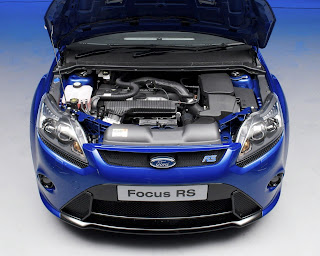More cars find here
The current third-generation Focus was launched for the 2012 model year, with a sporty sporty Focus ST "hot hatch" model added for 2013. It features a 252-hp, turbocharged 2.0-liter EcoBoost four and much sportier suspension tuning, along with performance improvements throughout. We've driven the 2013 Ford Focus ST and found it to be a very satisfying enthusiasts' car, while remaining one that you can drive daily on your commute, as well as for long highway trips. It was good enough, in fact, that it won a nomination for the Best Car To Buy award by Motor Authority.
In some states, there's also a battery-powered Focus Electric hatchback model. But Ford seems disinterested in the all-electric car--rated at 76 miles of range--leading to suspicions that it isonly a so-called compliance car, however, offered purely to meet California regulations requiring zero-emission vehicle sales. Instead, Ford prefers to emphasize sales of its Prius competitors, the compact hybrid C-Max (built on Focus underpinnings) and the C-Max Energi plug-in hybrid model, offering 21 miles of battery range backed up by a gasoline engine.
While the current Focus is base-priced just under $17,000 with delivery, it's easy to spend upwards of $10,000 more if you ladle on the luxury items that Ford offers--separately and as part of the top-end Platinum trim level.
The Ford Focus was completely redesigned in 2012, built in Michigan but sharing about 80 percent of its design with the version sold in Europe. Over several drives, we've noted the much-improved ride and handling, as well as the more sophisticated driving feel overall, of the new 2012 Focus. A new-generation direct-injection engine returns great gas mileage—up to 40 mpg in special SFE trim—and the lineup so far consists of four-door sedans and five-door hatchbacks. The current Fcus is great evidence that small cars don't have to seem like appliances, but can offer style, rewarding drivers, and upmarket features--if you're willing to pay for them.
This year, Ford has dropped the SEL trim from the Focus lineup, going from SE to Platinum. But the current Focus has all sorts of class-first options—including the MyFord Touch interface, an active parking feature, and HD Radio. For 2013, the Focus gained a top five-star NCAP Overall Score, and it's one of the few compact sedans to have earned both that and IIHS Top Safety Pick status.
The Ford Focus has been the company's compact entry for more than a decade, replacing the old Escort in 2000. When it was originally introduced that year, the Focus replaced the Ford Escort (and also the Ford Contour sedan, which was then discontinued). At that time of its debut, the Focus was a more upscale-feeling small car than most, offering a better interior experience than most small cars, plus critically lauded handling, so the top rivals at the time were the Volkswagen Golf/Jetta and Mazda Protégé.
Over its life, the Focus has had a variety of body styles, including two- and four-door sedans, three- and five-door hatchbacks, and a wagon. As compacts have gotten larger over the years, its place as the entry-level model in Ford's lineup was assigned instead to the Fiesta subcompact.
In its initial several years, the Focus was offered with 110-horsepower or 130-hp 2.0-liter four-cylinder engines, with the 130-hp (DOHC) version being the pick of the two. Most models could be equipped with a five-speed manual or four-speed automatic, though for many years wagon models were oddly offered only with an automatic. Some models were offered with a 2.3-liter engine. In addition to all the body styles, the Focus was available in many different trim levels and could be loaded with luxury items like leather upholstery and a moonroof.
A 2005 model-year refresh simplified the lineup in many ways and brought crisper front-end styling; the engine lineup changed to 136-hp (2.0-liter) and 151-hp (2.3-liter) versions of Ford's more modern Duratec engine. Focus models from this era and more recent are generally considered more reliable than the earlier ones—and for wagon and hatch aficionados, 2005-2007 is sweet spot.
For 2008 the Focus lineup was refreshed more thoroughly, with an extensively redone interior, more refinement, and expanded safety features. The wagon, along with all hatchback models were dropped, replaced buy a rather homely looking two-door coupe sold alongside the sedan. Also of note, Ford chose the youth-oriented Focus in which to introduce its new Sync hands-free interface, which has since spread to the rest of the lineup.
Ford offered electronic stability control early on for the Focus, but then discontinued it in 2004. Focus models without the optional side airbags have been rated 'poor' by the IIHS, so it should be a must-have. Through this era, the Focus didn't do so well in federal crash tests—for the early years of the Focus, three-door hatchback versions earned one star (out of five) for rear-seat passengers in the side-impact test, while it was only rated three stars in several categories.
The only serious performance model in the Focus' history has been the SVT Focus. Worshipped by pocket-rocket fans, the SVT Focus offered a higher-output, 170-horsepower four, stronger Getrag six-speed gearbox, plus better brakes, a more vocal exhaust, and a greatly enhanced, stiffer suspension that altogether made the Focus a blast to drive.


2.jpg)







No comments:
Post a Comment